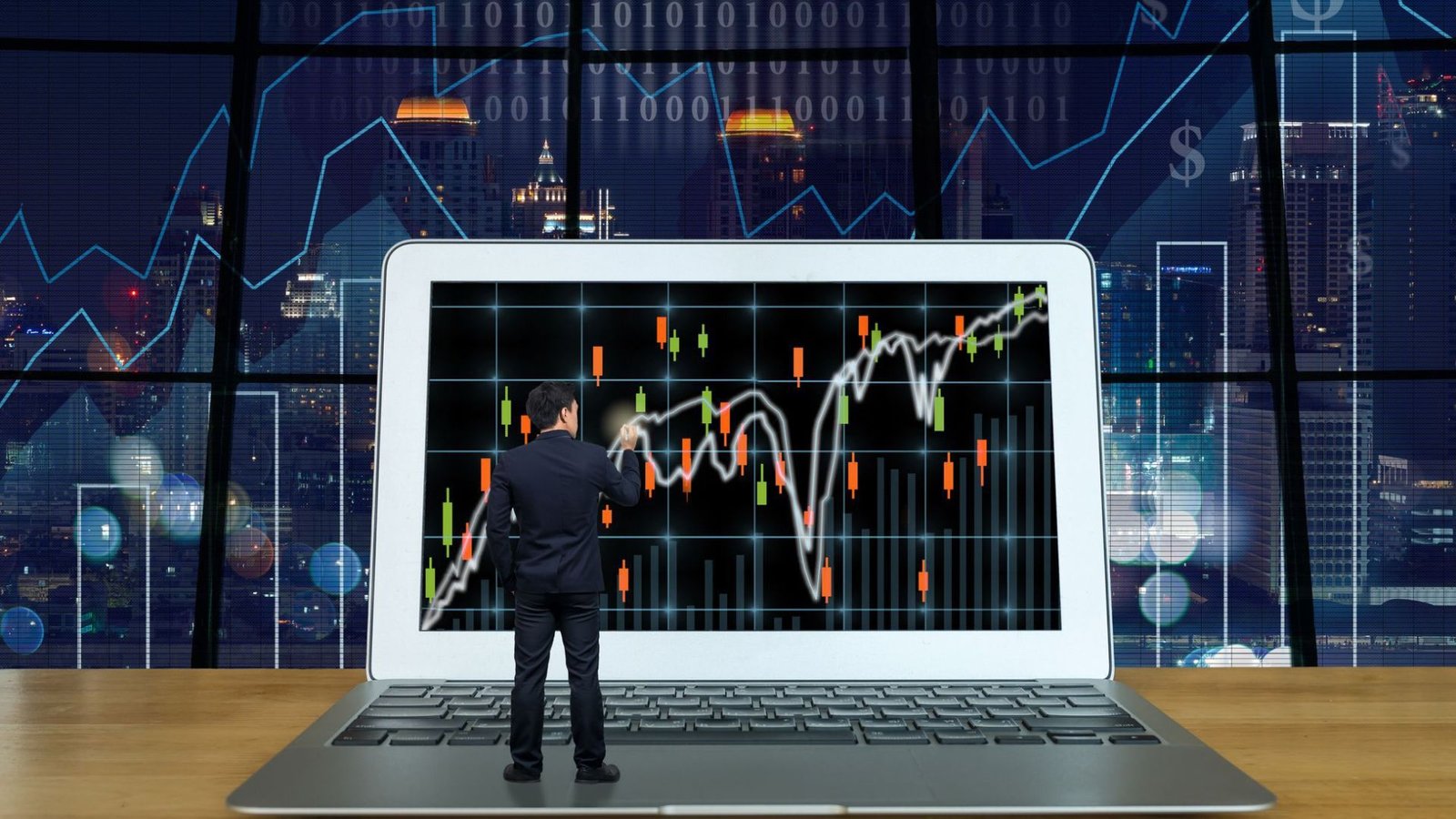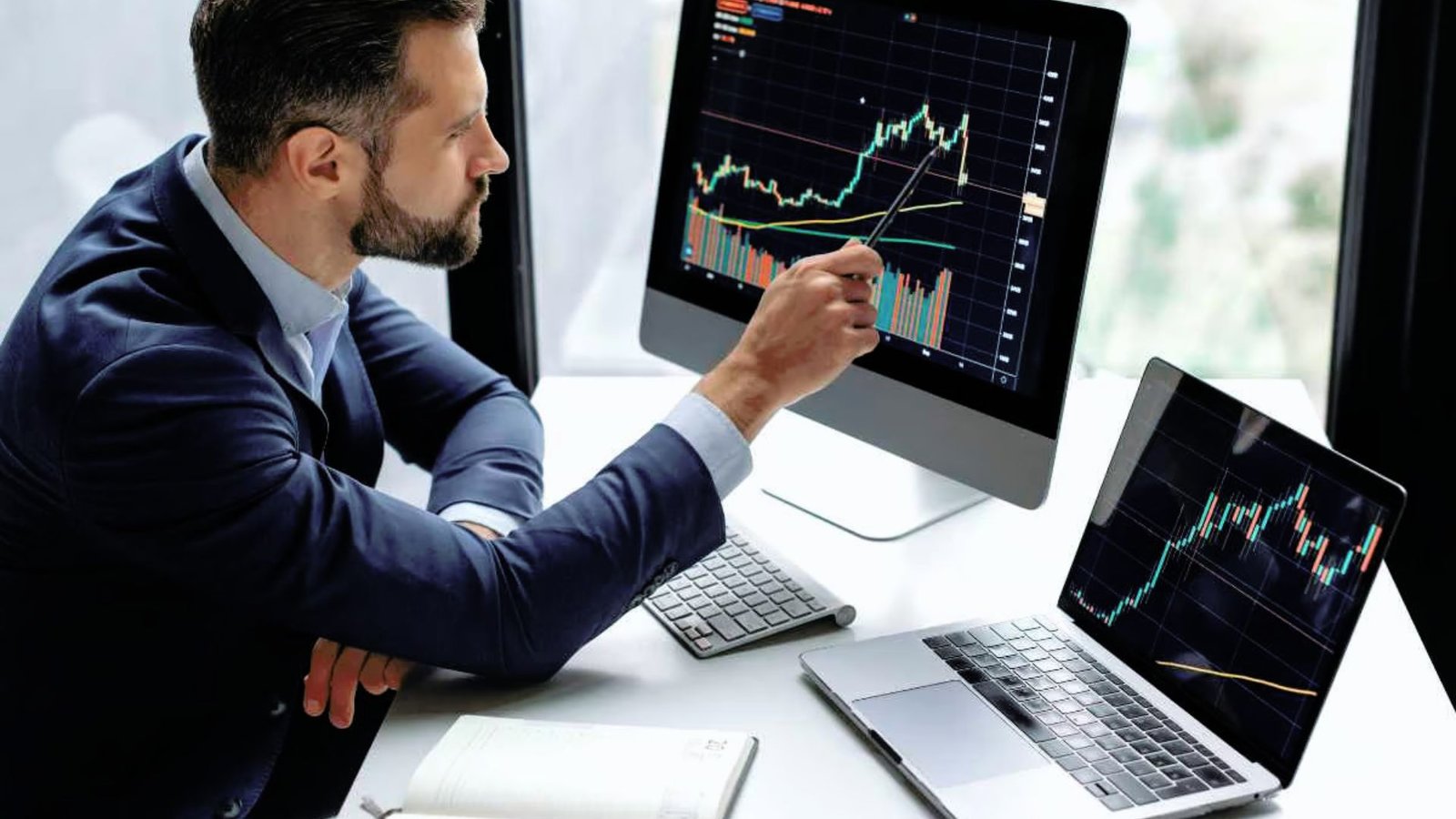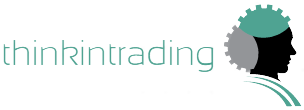
Forex trading also known as foreign exchange trading means buying one currency and selling another at the same time to try to make money from changes in their exchange rates. The word “Forex” comes from “foreign exchange,” showing that it involves trading currencies from different countries. In 2022, a report by the Bank for International Settlements found that the daily trading volume in the global forex market reached a massive $7.5 trillion. Join us as we explore more on forex trading, its meaning, strategies, and how to get started with forex trading.

Understanding Foreign Exchange Market
The foreign exchange market is where people buy and sell different currencies. It’s not like regular stock markets with one main place to trade. Instead, forex trading happens electronically all over the world. It involves big financial cities like Frankfurt, Hong Kong, London, New York, Paris, Singapore, Sydney, Tokyo, and Zurich. Because of this, trading starts in Tokyo and Hong Kong after the U.S. market closes. Since it covers many time zones, the forex market is always busy, and currency prices are always changing.
How Does the Foreign Exchange Market Operate?
The forex market is the only trading market that never stops, operating around the clock worldwide. Before, big banks and companies mainly traded currencies for their clients. But now, even small traders and investors can join in, making it easier for regular people to take part in forex trading.
Location of Foreign Markets
The global forex markets don’t have physical trading spots. Instead, trading happens online through connected computers and networks. People involved include institutions, investment banks, commercial banks, and individual retail investors from all over the world.
People Involved in the Forex Market
In the past, trading currencies was tough in our country for regular folks without the internet. Mostly, big companies, hedge funds, or rich individuals did it because it required lots of money. Today, banks mostly handle forex trading for their customers. Yet, pro and regular investors can also trade currencies among themselves.
Understanding Forex Trading
Forex trading, also called FX trading, is all about buying and selling different currencies to make money. You keep an eye on how currency values change, like if you think the Euro will go up compared to the U.S. Dollar. If you’re right and the Euro does go up (EUR/USD rate), you can sell your Euros later for more Dollars than you paid, making a profit.
Besides making bets on currency values, forex trading is also used for hedging. That means individuals and businesses use it to protect themselves from money losses caused by changes in currency values. For instance, a company that does business overseas might use forex trading to guard against potential losses from shifts in exchange rates. By locking in a good rate ahead of time through a forex deal, they can reduce the risk of losing money and make their profits more predictable.
Good Things About Forex Trading
Foreign exchange trading has some good things about it, like high liquidity, which means you can buy and sell currencies easily without changing their values too much. Plus, traders can use something called leverage, where they can control big deals with only a small amount of money. But it’s important to remember that while leverage can help you make bigger profits, it can also lead to bigger losses. So, forex trading needs skill, planning, and an understanding of the risks involved.
Another cool thing about foreign exchange trading is how global it is. Financial centres all over the world are part of it, which means currency values are affected by lots of different events worldwide. Things like interest rates, inflation, political stability, and how well economies are doing can change currency prices. For example, if a country’s central bank raises interest rates, its currency might get stronger because people can make more money from investments in that currency. But if there’s political trouble or the economy isn’t doing well, a currency might lose value. This shows how forex trading isn’t just about making money; it’s also connected to what’s happening in economies and politics around the world.
How to Get Started with Forex Trading
Starting foreign exchange trading is similar to starting stock trading. Here are some steps to help you begin your forex trading journey:
Learn About Forex
Forex trading isn’t too complicated, but it requires some specialized knowledge. Take time to learn the basics and keep learning as you go.
Open a Brokerage Account
To trade forex, you’ll need to open a foreign exchange trading account with a brokerage firm.
Develop a Trading Strategy
While predicting forex market movements is tricky, having a trading strategy can provide some guidelines. It’ll help you navigate the market better.
Keep Track of Your Trades
Once you start trading, regularly check your positions. Most trading platforms offer daily summaries of your trades. Make sure you don’t have any open positions that need attention and that you have enough funds for future trades.
Stay Calm
Starting in foreign exchange trading can be stressful. Stay disciplined and know when to close your positions if things aren’t going well.
Types of Markets
The forex market includes three main types of markets: spot, forwards, and futures. The spot market is the biggest and serves as the foundation for the other two. Usually, when people talk about foreign exchange trading, they’re referring to the spot market. Businesses and financial institutions mostly use forwards and futures markets to hedge their foreign exchange risks for specific dates in the future.
Spot Market
In the spot market, currencies are traded at current prices based on supply and demand. The prices depend on factors like:
- Current interest rates
- How well economies are performing
- Political situations
- Predictions about price changes
A spot deal is when two parties agree to exchange one currency for another at an agreed-upon rate. After the deal is closed, the settlement happens in cash. Even though spot market trades are for immediate transactions, they take about two days to settle.
Forward and Futures Markets
In the forwards market, two parties agree privately to buy a currency at a fixed price on a future date. These contracts are customized and traded directly between the involved parties, known as over-the-counter (OTC) trading. In contrast, futures contracts are standard agreements between two parties to exchange a currency at a set price and date. Unlike forwards, futures contracts trade on organized exchanges rather than directly between parties. These exchanges, such as the Chicago Mercantile Exchange (CME), regulate contract specifications like size, settlement dates, and price increments, which cannot be altered. Moreover, the exchange serves as an intermediary, facilitating clearance and settlement services for traders.
Basic Forex Trading Strategies
Additionally, in foreign exchange trading, there are two main types of trades: long and short. In a long trade, traders expect the currency price to go up so they can make a profit. In a short trade, they bet that the currency pair’s price will drop. Traders also use strategies like breakout and moving averages to help them trade better.
These strategies can be grouped based on how long they last:
Scalp trading
Traders hold positions for just seconds or minutes and make profits based on small pip counts.
Day trading
This involves opening and closing positions within the same day, usually lasting a few hours or minutes.
Swing trading
Traders hold positions for longer, from days to weeks.
Position trading
Traders keep a currency for a long time, even months or years.
Types of Charts Used by Forex Traders
Line Charts
Line charts offer a simple way to see how currencies move over time. They display the closing prices of a currency pair during specific timeframes. By connecting these closing prices, traders can spot trends and potential breakout points. However, line charts are usually just a starting point for deeper analysis.
Bar Charts
Bar charts provide more detailed information than line charts. Each bar represents one day of trading and includes the opening, highest, lowest, and closing prices (OHLC) for that day. Use colours to show price changes, with green or white indicating rising prices and red or black indicating falling prices. Bar charts help traders understand whether it’s a buyer’s or seller’s market.
Candlestick Charts
Foreign exchange traders widely use candlestick charts, which originated from Japan. They offer a visual representation of price movements and are easier to interpret. Each candlestick represents a trading period, with the upper part showing the opening and highest prices, and the lower part showing the closing and lowest prices. Green or white candles show rising prices, while red or black candles show falling prices. Candlestick patterns help traders spot market direction and potential reversals, with analysts analyzing common patterns like the hanging man and shooting star.
Pros of Forex Trading
- Forex markets have the highest daily trading volume worldwide, ensuring lots of liquidity. This means traders can quickly buy and sell major currencies with minimal price differences, even when the market moves fast.
- With leverage available in forex trading, traders can potentially increase their starting capital quickly. Leverage allows for bigger trades, which can lead to higher profits, although it also increases the risk of losses.
- Foreign exchange trading follows similar principles as traditional trading but requires less initial money. This makes it easier for people to start trading forex compared to the stock market.
- The forex market, unlike traditional stock or bond markets, lacks control by a single exchange. It operates in a decentralized manner, reducing the risk of manipulation based on inside information about specific companies or stocks.
Cons of Forex Trading
- Leverage in foreign exchange trading can make trades more unpredictable. While it can increase potential profits, it also raises the risk of larger losses.
- Banks and brokers in forex offer high leverage, meaning traders can control big positions with small amounts of money. Leverage ratios like 50:1 are common, but some offer even more. However using too much leverage can lead to significant losses, especially for new traders.
- Being successful in forex trading requires a good understanding of economic fundamentals. Traders need to know how different countries’ economies work and affect each other to predict currency movements accurately.
- The forex market lacks the same level of regulation as other financial markets because it operates in a decentralized manner. Rules and regulations vary depending on where you trade, which can expose traders to risks.
- Unlike some investments, forex trading doesn’t offer regular income, like dividends. This might make it less attractive to investors who prefer steady returns over the chance of making big profits.
Are Forex Markets Regulated?
Foreign exchange trading regulations vary depending on the country. In countries like the United States, there are robust systems and organizations overseeing forex trading activities. For instance, in the U.S., the National Futures Association (NFA) and the Commodity Futures Trading Commission (CFTC) tightly regulate forex trading. However, countries like India and China impose restrictions on firms and capital involved in forex trading due to heavy leverage usage.
Europe, particularly the United Kingdom, hosts the largest forex market. In the UK, the Financial Conduct Authority (FCA) oversees and regulates forex trading activities.
In conclusion
Forex trading provides benefits for traders, especially those with limited funds, as day trading or swing trading with small amounts is easier than in other markets. Traders with more funds and long-term goals can find success with strategies like long-term fundamentals-based trading or carry trades. To succeed in forex trading, understanding macroeconomic fundamentals and gaining experience in technical analysis are crucial. This knowledge can help new traders increase their profitability in the forex market, so explore more about forex trading here!
FAQs
What are the main factors that influence currency prices?
Factors such as interest rates, economic performance, political stability, and geopolitical events influence currency prices.
Can individuals with limited funds participate in foreign exchange trading?
Yes, individuals with limited funds can participate in forex trading, as it allows for trading with small amounts and offers high liquidity.
What are some common forex trading strategies?
Common forex trading strategies include scalp trading, day trading, swing trading, and position trading, each varying in duration and approach.
What are the different types of charts used in foreign exchange trading?
The main types of charts used in foreign exchange trading are line charts, bar charts, and candlestick charts, each providing different levels of detail and insights into price movements.
How does leverage work in forex trading?
Leverage allows traders to control larger positions with a smaller amount of capital, amplifying both profits and losses. Common leverage ratios in forex trading can be around 50:1 or higher.
Are there risks associated with forex trading?
Yes, forex trading carries risks, including volatility, leverage-induced losses, and the need for a solid understanding of economic fundamentals.
Can forex trading be used for long-term investment purposes?
Yes, traders can use forex trading for long-term investment purposes, employing strategies such as long-term fundamentals-based trading or carry trades.
How are forex markets regulated globally?
Foreign exchange trading regulations vary by country, with oversight provided by organizations such as the National Futures Association (NFA), the Commodity Futures Trading Commission (CFTC), and the Financial Conduct Authority (FCA).
What are some resources available for learning forex trading?
Resources for learning foreign exchange trading include online courses, educational websites, trading books, and demo accounts provided by brokerage firms.
Is it possible to trade forex part-time while working a full-time job?
Yes, it is possible to trade forex part-time while working a full-time job, but it requires discipline, time management, and a solid trading strategy.
You might also be interested in the following:
